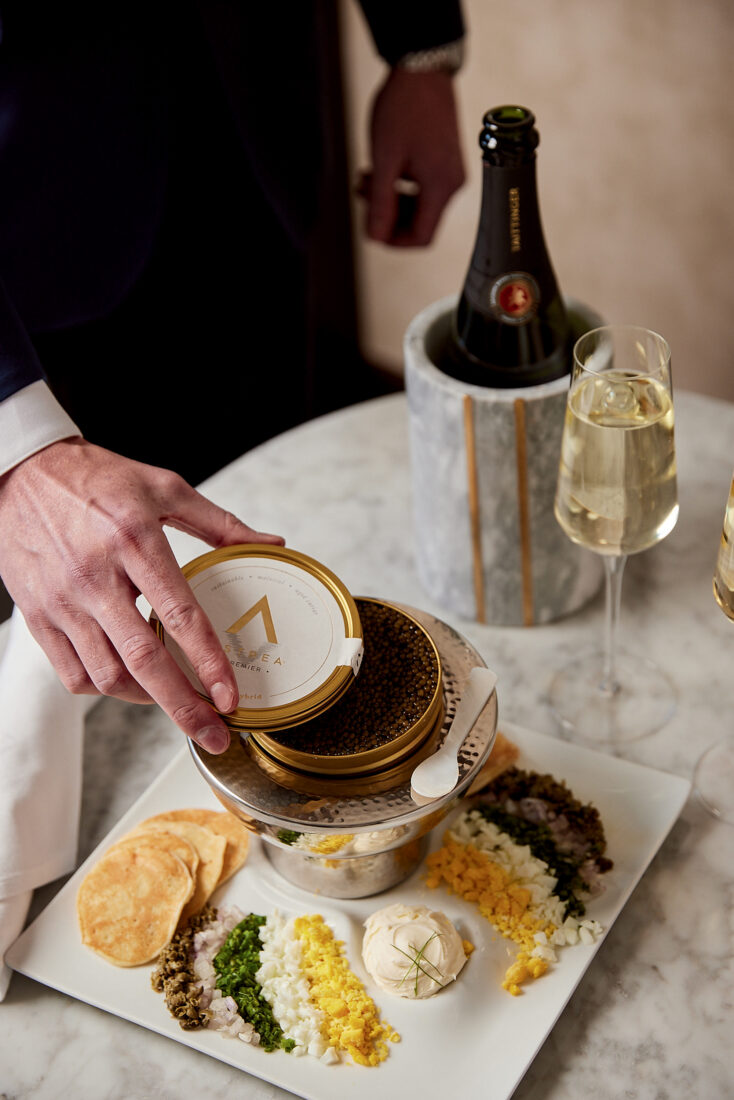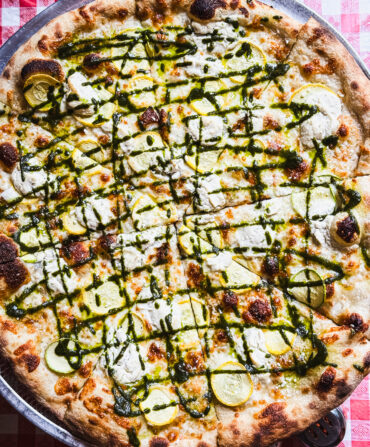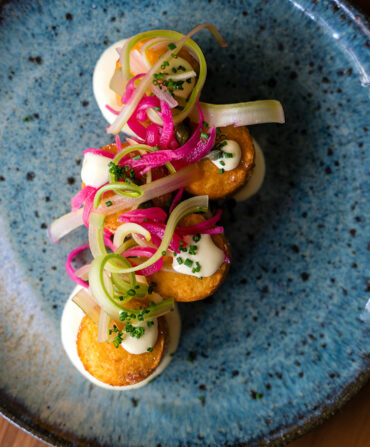Butterfly pea flower tea at the Laurel Hotel’s 1856–Culinary Residence restaurant in Auburn, Alabama, arrives at the table a deep blue. But a pour of basil-and-sage-accented lemonade triggers a chemical reaction, and it suddenly swirls into a vibrant magenta hue. More than an eye-catching, refreshing sip, it’s the fruit of a collaboration between Auburn University students and faculty, as well as hospitality industry experts, who work and learn together to delight and impress guests. “My students figured out how to grow butterfly peas for the restaurant,” says horticulture department head Desmond Layne, “and hospitality program students learned to dry the flowers to make the tea.”

The Laurel opened in 2022, and its emphasis on service, plus its sumptuous spaces—1856’s fine dining, a rooftop oasis, a modern spa, and sleek rooms balancing warm wood and cool marble—earned the hotel Alabama’s first and only AAA five-diamond rating. Though young, the whole enterprise is already providing a glimmer of hope in the South for a hospitality industry that’s still struggling to fill positions in the wake of the pandemic: As a “teaching hotel,” the Laurel is training the next generation of professionals in partnership with the university’s Horst Schulze School of Hospitality Management.
After choosing a concentration in hotel and restaurant management, culinary science, or event management, students show up for traditional classes but also immerse themselves in day-to-day operations, greeting hotel guests by name upon arrival and whisking them through a seamless check-in. Seven stories above, they deliver drinks and small bites at the rooftop bar and wait on guests relaxing in poolside cabanas. At 1856, students serve diners such seasonal plates as foraged-mushroom gnocchi while classmates chop, stir, and sauté in its kitchen under the tutelage of each year’s chef in residence. (Atlanta hotshot Ford Fry filled the role for the past academic year.)
Other hands-on opportunities include a brewery for graduate students, and a coffee roastery and café in the adjacent Tony and Libba Rane Culinary Science Center. “Our experiential learning is unique and readies our students to be leaders in the industry,” says Antony Osborne, the director of culinary training and innovation, and a master pastry chef who’s worked in Michelin-starred restaurants. “There’s no place else in the country with these resources in one place.” Also notable: 1856’s master sommelier—the only one in the state—teaches beverage appreciation when he’s not advising on pairings.
On the roof, where pretty much everyone always ends up, the views of the sun setting between Auburn University’s storied Jordan-Hare Stadium and the clock tower of campus landmark Samford Hall swell Auburn alumni with pride. But the lofty spot has won over some unlikely admirers, too—“We had some die-hard Alabama fans here recently, and they loved it,” says general manager Josh Head. Even fierce rivals will find a welcome seat at Walt’s cocktail bar, the sunny hangout tucked alongside the rooftop teaching garden, overseen by the horticulture department with help from culinary students.
From that perch, future hoteliers and chefs tend curls of emerald kale, climbing blackberry vines, sweet-corn stalks, and blooms that make their way into dishes, drinks, and decor—mint-infused water at the spa, basil-brightened cocktails at Walt’s, 1856’s seasonal menu. Hibiscus might embellish a spread of light bites in the lounge, and guest room bud vases hold single snapdragon stems. Students pick plump cherry tomatoes to dehydrate and fold into dough for a rustic bread. On Sunday nights, a chef pulls what’s ripe and ready and grills it right there on the roof. For Layne, the garden is just one of many places for discovery, for watching the alchemy among students, teachers, and guests evolve naturally. “There’s no textbook for what we are doing,” he says. “It’s exciting—and fun—asking questions and learning alongside students. That’s the real beauty of this.”
Read more about Ford Fry’s experience as the chef in residence here.








